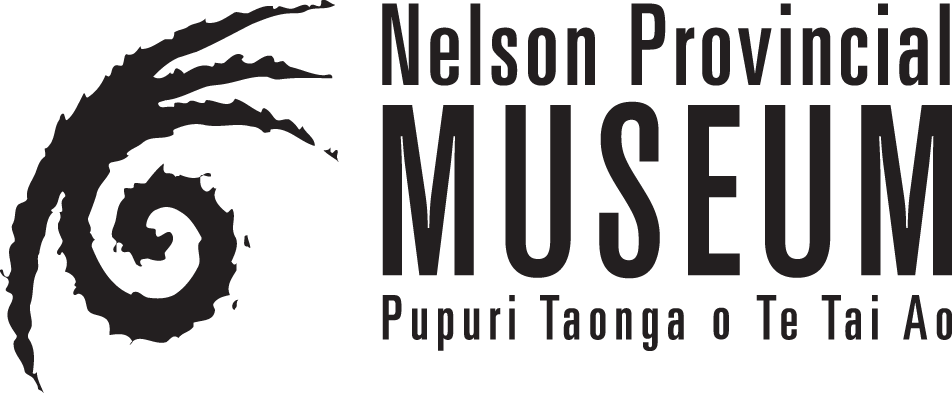22 June-13 October
A new exhibition is shining the light on one of the northern South Island’s most significant taonga.
Te Tuhi o te Whenua: Pakohe Unearthed, which opened in Whakatū Nelson on Saturday, marks the region’s first public celebration of pakohe, a precious and culturally significant resource which has helped shape the story of Te Tauihu o te Waka-a-Māui.
Curated by Ngāti Kuia and Pupuri Taonga o Te Taiao, Nelson Provincial Museum, and presented in collaboration with all iwi of Te Tauihu, Te Tuhi o te Whenua: Pakohe Unearthed celebrates the strength, versatility and resilience of pakohe and the people who have worked it over hundreds of years. It also follows the revival of pakohe carving and introduces some of the key contemporary artists behind its resurgence.
Pakohe (metasomatised argillite) has been used by iwi Māori for centuries in the production of tools such as toki (adzes), whao (chisels) and māripi (knives), revered for their strength and ability to hold a sharp edge. Toki Pakohe were not only prized tools but also symbols of mana.
Found in what Ngāti Kuia call Te Rohe Pakohe—the Nelson Mineral Belt—pakohe from Te Tauihu was a highly sought-after resource and key to a thriving early trade economy. It has been discovered in archaeological sites in most areas of Aotearoa.
For the descendants of those early stone workers and traders, Saturday’s exhibition opening was an emotional occasion. Te Rūnanga o Ngāti Kuia Kaitiaki, Hina-i-te-māra Moses-Te Kani, said the celebration and acknowledgement of such a precious resource had been a long time coming.
“Pakohe is an intrinsic part of our identity as Ngāti Kuia in Te Tauihu, and that could certainly be felt here today. It is overwhelming that after so many years, we are able to stand here and finally celebrate and acknowledge a taonga that is so important to us.”
Ngāti Kuia have lived on the mineral belt for generations and have a long and continuous association with Te Rohe Pakohe, says Moses-Te Kani.
“Pakohe has shaped our Ngāti Kuiatanga, our tribal culture. ‘He Waipounamu he maunga Pakohe,’ is a Ngāti Kuia whakataukī, for example, that speaks to that connection and the importance of these taonga. Our tīpuna had considerable knowledge of the places for gathering pakohe and associated rocks; they were the geologists of their time. Because this was a taonga resource, certain tikanga and kawa were applied to pakohe gathering and manufacturing to ensure its sustainability. These values not only remain important to our people today but remain in use, unbroken through the generations.”
Moses-Te Kani, who was one of the Ngāti Kuia Treaty of Waitangi settlement researchers behind a push to protect pakohe as a taonga pōhatu in the late 1990s, says the modern revitalisation of pakohe had only been possible because of the work of contemporary pakohe workers and artists to uphold the associated mātauranga and tikanga.
“We acknowledge all those who have gone before us to keep this fire burning as well as those who continue to keep this knowledge alive, people like Master Carvers Toro Frank Wells, Ruihana Smith, Fayne Robinson and Natalie Kere. There is a well-known quote from Toro Frank which I think best explains our relationship with pakohe. He was asked why pakohe was so special to him. He said: ‘Because we are te Iwi Pakohe, it is us.’”
In addition to local taonga, the exhibition features significant historical pieces loaned from museums, including Te Papa Tongarewa Museum of New Zealand, Auckland War Memorial, Marlborough Museum, Te Ahu Museum in Kaitāia, and Tūhura Otago Museum.
Hamuera Manihera, Kaitiaki Taonga, at Nelson Provincial Museum, said the connections made in bringing the exhibition together had also been significant.
Earlier this year, staff from Te Ahu Museum and representatives of iwi in Te Tai Tokerau travelled to Te Tauihu with two ancient toki pakohe on loan for the exhibition. One is from Otengi Bay, near Taipa, and still retains a name, Kaweau. The other is from Kaitāia. Both are crafted from Te Tauihu-sourced pakohe but are unique in that they are adorned with notches, a style particular to Te Tai Tokerau.
“It was really powerful, and to see these taonga and connect them back to this place, I think that underlines why this exhibition is so important,” says Manihera. “We have a rich history here in Te Tauihu; it is just waiting to be told.”
Lucinda Jimson, Chief Executive at Pupuri Taonga o Te Taiao, Nelson Provincial Museum, said the museum board and staff were honoured to be working in partnership with Te Tauihu iwi to host the exhibition.
“We want to thank our iwi partners and the kaitiaki of the taonga on display. This is a significant exhibition for Te Tauihu, and we look forward to continuing to work together to celebrate this region’s unique story.”
Te Tuhi o te Whenua: Pakohe Unearthed is on show at Pupuri Taonga o Te Tai Ao, Nelson Provincial Museum, from Saturday, June 22 to Sunday, October 1, 2024. Entry is free for Nelson Tasman residents.
Image: Naomi Aporo-Manihera

